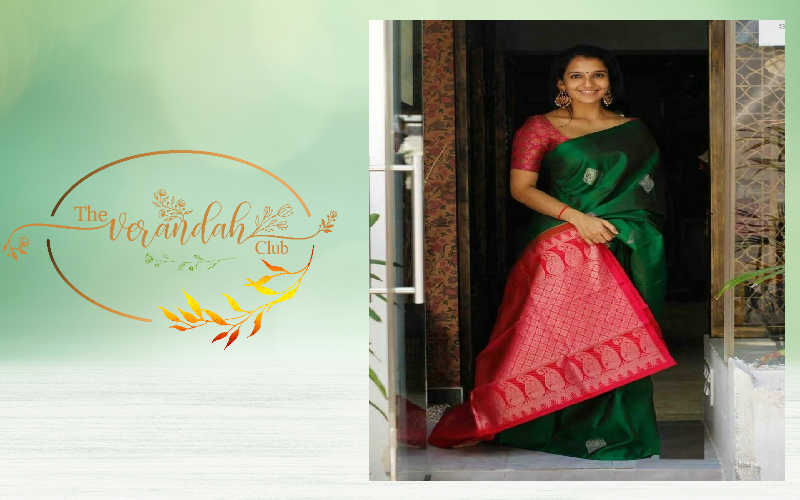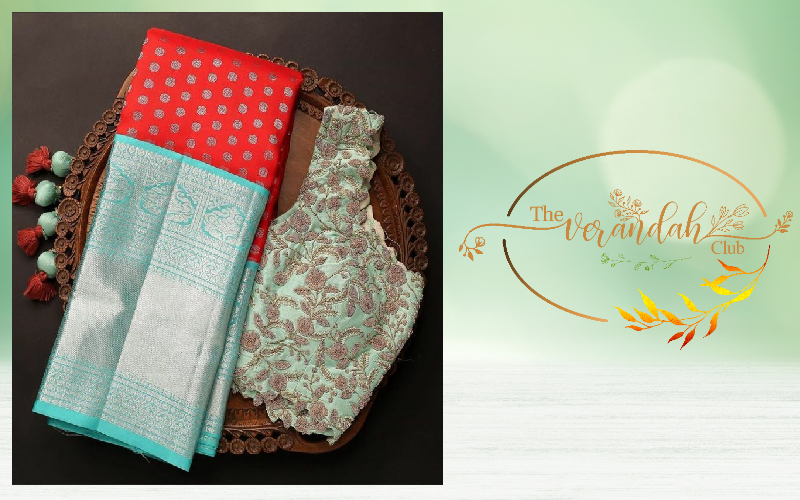CEOs and housewives, politicians, poets and writers, newsmakers and newsreaders, in offices, fields, construction sites and across the Indian subcontinent there is one thing women share in common – the sari. This remarkable woven length of unstitched cloth has through the centuries, from eons before Rani Lakshmi Bai, defined and enhanced the position of woman in their worlds.
Part of the unstitched woven garment lineage of India that includes dhotis, lunghis, dupattas, angochas, turbans, shawls, the meghla-chador and sarong the sari continues to hold a special place.

The sari is not one kind of garment as its drape, length, material, weave, style, accoutrements are individualized by several million of women who wear it. In the multiplicity of women’s life and identities the draping of the sari whether it be for comfort and convenience, for practical and no-nonsense work in the fields, at home or in office, as an ultra-feminine style for the red carpet at Cannes and the Oscars, or worn by women in public life – law makers, artists, bureaucrats, doctors, lawyers, educationists and others in the public eye excluding authority dressed in a sari, leading modern lives. This unstitched cloth, a uniquely Indian phenomenon, defines our cultural identity and is our visual marker.
While the draping style continues to vary across the geography of India, the urban style of wearing the sari can be traced to Gyanadanandini Devi, the wife of Satyendranath Tagore. The story goes as that Satyendranath Tagore had to leave for Bombay (now Mumbai) for his posting as the first Indian selected for elite Indian Civil Service. He wished to take his wife with him, but there arose the problem of what she would wear while stepping out of the home's inner quarters to face the onerous duties of an ICS officer’s wife. Gyanadanandini Devi, herself a remarkable accomplished woman appreciated the style the Parsi women adopted while wearing the sari. She emulated and adapted the style thus founding the contemporary sari wearing mode as we know it today.
In the 1950’s Mahatma Gandhi's powerful call of Swadeshi and Swaraj to his fellow Indians not only created the radical shift that led to the crumbling of imperialism in India, the call was equally a beacon to the spinners and weavers, the makers by hand, spread across rural India. The powerful iconic image of Mahatma spinning on the charkha, his vision for a self-reliant, free India closely linked to its resurgent village industries and its village roots, laid the foundation stone of the development and revitalization of handloom weaving setting the bedrock, inspiring others to follow. The many millions of weavers in India continue to spin the wrap and weft of this unstitched cloth.

The sari has been part of India's journey highlighting key moments of political and social change, with images relayed on newsreels, television and in the press of women holding their own – dressed in saris, conveying authority. A pan-Indian look, both distinct, original, and power dressing at its best. Images of the Dandi March with women walking in step towards claiming freedom from oppression, Sarojini Naidu, Aruna Asaf Ali, and others addressing huge public gatherings, Mother Teresa in her simple white sari bordered in blue, women at the frontiers of change formidable in the power that they invoke, dressed in saris that do not distract from their achievements but are part of their whole persona, communicating their own strategic message of tradition with contemporaneity.
The strength of sari lies equally in its unchanging adaptability that has weathered societal shifts and has remained largely unaffected by seasonality and trends.
The weaving pedigree stretches back over five millennia. Excavations at ancient sites of the Indus Valley have unearthed needles, spinning implements and a fragment of madder dyed cotton, revealing evidence of an already highly developed textile tradition. Further evidence through literary refernces, paintings, sculpture, all reveal a vibrant and evolving textile culture, while Vedic sources of the Samhitas, the Brahmanas, the great epics of Ramayana and Mahabharata, the Buddhist Jataka legends reveal details on dress and clothing and their making. Further on in time the murals painted in the Ajanta caves, dated to the 5th century A. D., depict a culture evolved in every aspect, including textiles.

These lengendary textiles were exported to the known world, both East and West as is revealed from the accounts of travelers from Megasthenese, the Greek Ambassador at the Mauryan court to Pliny writing in Egypt. From the latter half of the 1st century A. D., we have an unknown Greek trader’s log book, the ‘Peripilus of Erythrea’, listing textile exports from India and their ports of exit. Better documented are, of course, the developments as recorded in the Mughal period, when luxurious and extravagant textiles for the courts of the great Moguls received an enormous boost, followed by the Dutch, the British East India Company, French, and Portuguese, interest and trade in Indian textiles.
This technology, the skill, and the equipment present today is sustained, kept alive, and vibrant by guru-shishya parampara of the passing of inter-generational knowledge transmitted from one generation to the next, orally and through daily diligent practice. The art of the sari – the weaving and embellishment continues to be practiced across the whole of India, distinguished by its directory of motifs, its vocabulary of form, the immense regional differences, based on customs and practice of textile usage that continue to be influenced by geographic factors, and predisposed by historic influences and cultural and ritual underpinning.
(To be continued...)
NEXT ARTICLE